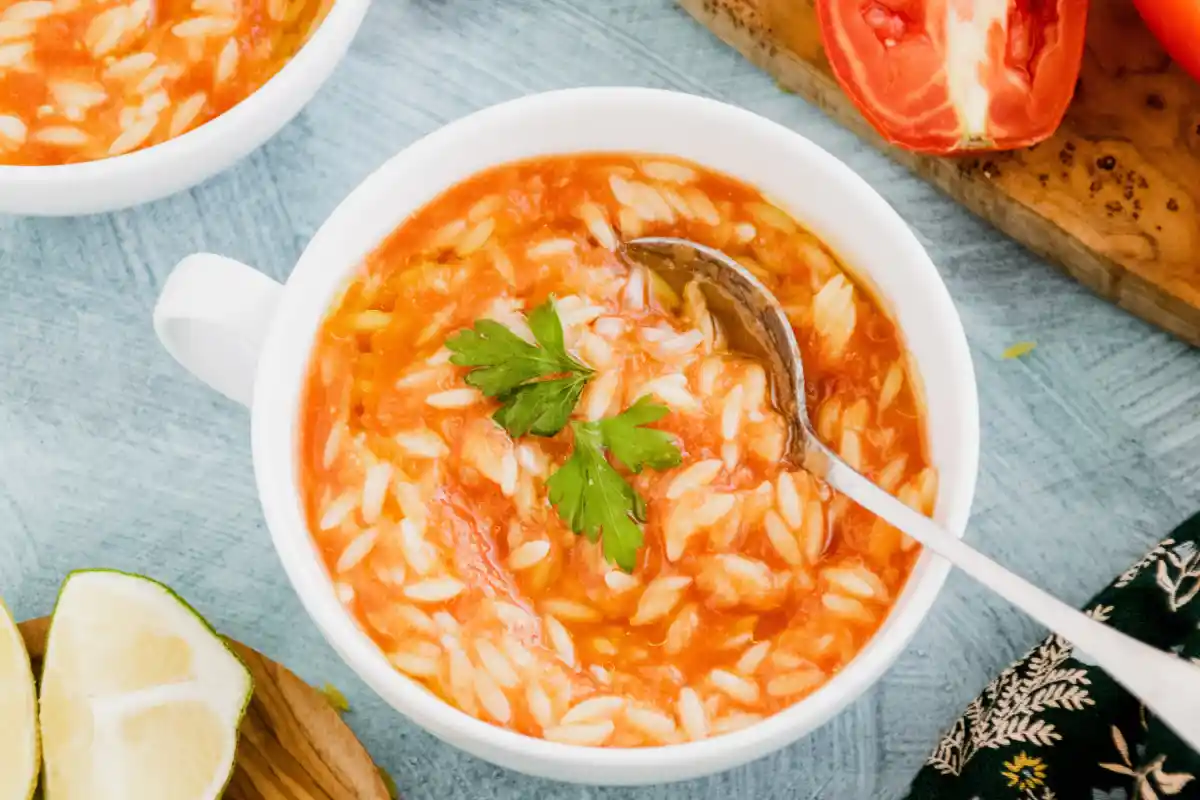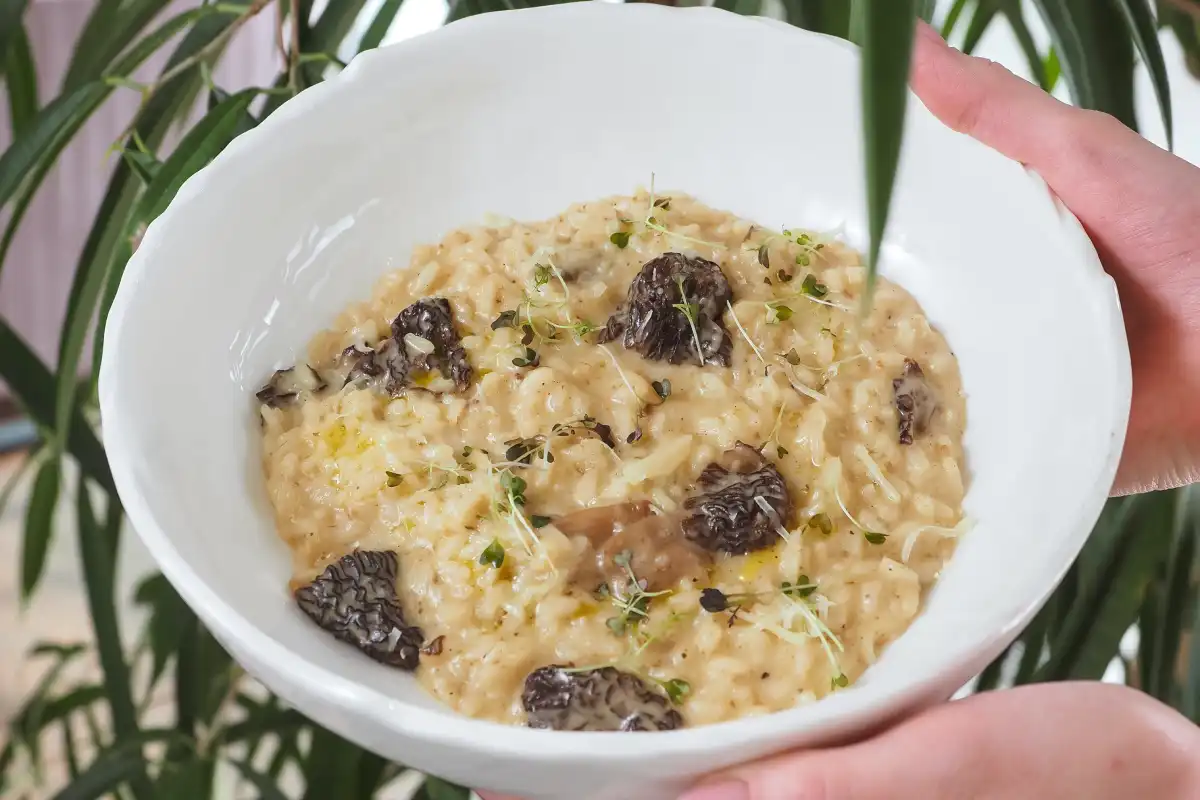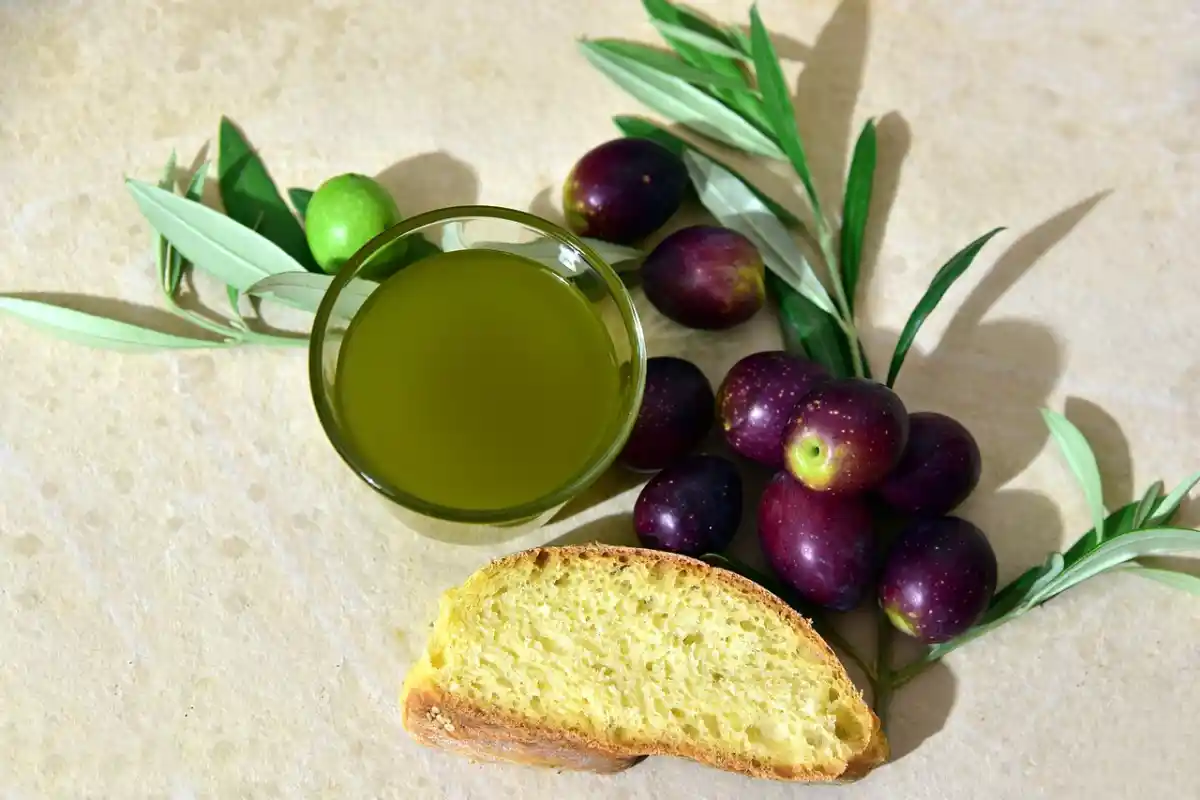Embark on a flavorful journey into the world of orzo and pastina. These two pasta varieties are staples in many kitchens, but confusion often arises about their similarities and differences. This guide aims to clarify, educate, and inspire your culinary adventures, offering a deep dive into each pasta’s unique characteristics, uses, and nutritional profiles.
Understanding Orzo
Delving into the World of Orzo Pasta
Orzo, a small, rice-shaped pasta, has become a favorite in kitchens worldwide for its versatility and unique texture. Let’s explore this pasta in greater detail:
Origins and History:
- Mediterranean Roots: Orzo originated in Italy and is a staple in Mediterranean cuisine. It derives its name from the Italian word for “barley,” due to its grain-like appearance.
- Cultural Significance: In Mediterranean cooking, orzo is not just food; it’s a part of culinary tradition, often featured in family gatherings and festive meals.
Making Orzo:
- Ingredients: Orzo is made from semolina flour, a coarse, purified wheat middling of durum wheat. This gives orzo its distinctive firm texture.
- Production Process: The dough is formed into the characteristic rice-like shape and then dried, making it suitable for long-term storage.
Culinary Uses:
- Versatility in Dishes: Orzo’s unique shape and firm texture make it suitable for a variety of dishes. It’s commonly used in soups, salads, and even as a base in pilaf-style preparations.
- Absorption of Flavors: One of Orzo’s standout qualities is its ability to absorb and complement the flavors it’s cooked with, making it a favorite for dishes rich in herbs, spices, and sauces.
Nutritional Profile:
- Carbohydrates and Protein: Orzo, like most pasta, is primarily a carbohydrate source, offering a moderate amount of protein.
- Dietary Fiber: While traditional orzo is not high in fiber, whole wheat versions are available as a more fiber-rich option.
Cooking Tips:
- Perfect Al Dente: For the best texture, cook the orzo in boiling, salted water for about 8-10 minutes until it’s al dente.
- Flavor Enhancing: Toasting orzo in a pan with a bit of oil before boiling can add a delightful depth of flavor.
Discovering Pastina
The Endearing World of Pastina Pasta
Pastina, often affectionately referred to as the quintessential comfort food in Italian households, is a tiny pasta with a big place in culinary hearts. Let’s delve deeper into what makes pastina so special:
Origins and Cultural Significance:
- Italian Heritage: Pastina, which means “little pasta” in Italian, is deeply rooted in Italian cuisine. It’s often the first pasta experience for many Italian children.
- Symbol of Comfort: In Italy, pastina is synonymous with comfort and care, frequently prepared for the young, the unwell, or anyone in need of a soothing meal.
The Making of Pastina:
- Traditional Ingredients: Made from the same semolina flour as many other pastas, pastina’s composition gives it a comforting, soft texture upon cooking.
- Variety of Shapes: While commonly known in its tiny, star-shaped form, pastina comes in various other small shapes, each adding a different texture to dishes.
Pastina in Cuisine:
- A Soup Staple: Pastina’s most traditional use is in broths and soups like Italian Penicillin Soup. Its small size allows it to blend smoothly into the liquid, offering a pleasant, delicate bite.
- Beyond Soups: Innovative chefs and home cooks use pastina in creative ways, such as in salads, side dishes, or even incorporated into stuffings for meats.
Nutritional Aspects:
- Energy Source: Like orzo, pastina is predominantly a carbohydrate source, with some protein content.
- Suitable for All Ages: Its easy-to-digest nature makes pastina ideal for all age groups, from toddlers to the elderly.
Cooking Pastina:
- Simple Preparation: You can easily cook pastina by simmering it in water or broth until it becomes tender.
- Versatile in Flavor Pairings: Pastina, delightful in its simplicity, pairs well with various flavors. You can mix it with butter and cheese for a simple dish or add it to rich, flavorful broths for added taste.
Is Orzo the Same as Pastina?
Unraveling the Differences
When exploring the world of pasta, one frequently asked question stands out: Is orzo the same as pastina? While they share similarities, key differences set them apart. Let’s clarify these distinctions.
Appearance and Size:
- Firstly, orzo resembles rice grains in shape and size, larger than pastina. Its elongated form holds up well in a variety of dishes, from salads to casseroles.
- Conversely, pastina boasts tiny, often star-shaped pieces, ideal for blending into soft, delicate soups and broths.
Texture and Culinary Role:
- Additionally, orzo offers a slightly chewy texture when cooked, making it a substantial addition to dishes where it needs to stand out.
- In contrast, pastina provides a softer, more subtle texture, perfect for comforting, gentle meals, especially suitable for young children or light dishes.
Cooking Techniques:
- Orzo, with its robust nature, often gets toasted before boiling to enhance its nutty flavor. This step adds a layer of complexity to its dishes.
- Pastina, on the other hand, typically simmers in broths, absorbing the flavors while maintaining its delicate texture.
Cultural Significance:
- Furthermore, orzo enjoys popularity across various Mediterranean cuisines, reflecting its versatility in numerous recipes.
- Pastina, deeply ingrained in Italian culinary traditions, symbolizes comfort and is often associated with homemade, nurturing meals.
Through this exploration, it becomes clear that while orzo and pastina may appear similar at a glance, they hold unique places in the culinary world. Each brings its distinct charm and versatility to the table, proving that even the smallest differences in pasta can lead to a variety of delightful culinary experiences.
Nutritional Insights
Health Aspects of Orzo and Pastina
Understanding the nutritional value of orzo and pastina is crucial for those who value a healthy diet. Let’s delve into their health aspects to see how they contribute to our well-being.
Basic Nutritional Composition:
Firstly, both orzo and pastina primarily consist of carbohydrates, providing energy for daily activities. They also contain a moderate amount of protein, essential for muscle growth and repair.
However, it’s important to note that traditional versions of these pastas do not offer significant fiber content.
Whole Wheat Options:
Additionally, for those seeking healthier alternatives, whole wheat versions of both orzo and pastina are available. These varieties offer higher fiber content, which is beneficial for digestive health.
Moreover, whole wheat options also provide a greater array of nutrients, including B vitamins and essential minerals like iron and magnesium.
Caloric Consideration:
Regarding calories, both pastas, when cooked, have similar calorie counts. However, portion control is key, as pasta dishes can be calorie-dense due to added sauces and ingredients.
Gluten Content:
Importantly, as they are made from wheat, orzo, and pastina contain gluten. This is an essential consideration for those with gluten sensitivities or celiac disease.
Incorporation into Diets:
Finally, when incorporating orzo and pastina into a balanced diet, consider pairing them with vegetables, lean proteins, and healthy fats. This approach ensures a well-rounded meal that maximizes nutritional benefits.
In summary, while orzo and pastina provide basic carbohydrates and proteins, opting for whole wheat versions can enhance their nutritional value. Keeping an eye on portion sizes and complementing them with other healthy food groups makes these pastas a versatile and nutritious component of any diet.
Cooking Tips for Orzo and Pastina
Cooking pasta might seem straightforward, but mastering the nuances of orzo and pastina can elevate your dishes. Here are some key tips:
Orzo Cooking Tips:
- Boiling: Cook orzo in plenty of salted boiling water, just like traditional pasta, for about 8-10 minutes until al dente.
- Toasting: For a nuttier flavor, toast orzo in a bit of olive oil before boiling.
- Rinsing: Avoid rinsing orzo after cooking to preserve the starch that helps sauces cling to the pasta.
Pastina Cooking Tips:
- Broth Cooking: Simmer pastina in a flavorful broth for a comforting soup.
- Water-to-Pasta Ratio: Use about 4 cups of water for every cup of pastina to prevent sticking.
- Stirring: Regular stirring is crucial to prevent clumping due to its small size.
Both pastas benefit from a watchful eye during cooking to ensure the perfect texture.
Popular Recipes and Uses
Creative Ways to Enjoy Orzo and Pastina
Orzo and pastina are not just versatile; they’re the stars of many delightful recipes. Explore these ideas:
Orzo Recipes:
- Orzo Salad: Mix cooked orzo with cherry tomatoes, feta cheese, olives, and a lemon-olive oil dressing for a Mediterranean twist.
- Creamy Orzo Risotto: Cook orzo slowly in broth and cream, finishing with Parmesan cheese for a rich, creamy dish.
- Orzo and Vegetable Bake: Combine orzo with roasted vegetables, marinara sauce, and mozzarella cheese, then bake until bubbly.
Pastina Recipes:
- Classic Pastina in Broth: A simple, soothing dish of pastina cooked in chicken or vegetable broth.
- Cheesy Pastina: Stir Parmesan cheese into cooked pastina for a quick, comforting meal.
- Pastina with Eggs: Mix cooked pastina with beaten eggs and cook like a pancake for a unique breakfast option.
These recipes showcase the flexibility and unique qualities of both pasta types.
FAQs: Exploring Orzo and Pastina
What pasta is similar to pastina?
- Stelline: Small, star-shaped, similar to pastina, often used in soups.
- Acini di pepe: Tiny, peppercorn-sized pasta, ideal for light broths.
- Risoni/Orzo: Larger than pastina but can be used in similar recipes. For a comprehensive exploration of these and other alternatives, read our detailed guide on What Pasta is Similar to Pastina? This guide will help you discover a variety of pasta shapes and sizes that are perfect substitutes for pastina in your favorite dishes.”
Can you substitute orzo for pastina?
Yes, orzo can be substituted for pastina in many dishes, although adjustments may be necessary due to differences in size and texture. Orzo’s larger, rice-like shape makes it more suitable for salads, casseroles, and pilaf-style dishes, whereas pastina’s tiny form is ideal for soups and broths. When substituting orzo for pastina, especially in soups, consider the cooking times and how the pasta’s texture will affect the dish’s overall feel. For a deeper understanding of how to effectively use orzo as a substitute for pastina, including tips on cooking methods and recipe adjustments, refer to our comprehensive guide: “Substitute Orzo for Pastina: A Comprehensive Guide.” This guide will help you navigate the nuances of this substitution, ensuring your dishes retain their intended flavors and textures even with the pasta swap.
What is another name for pastina?
- In Italy, pastina is sometimes referred to as “pastina stellata” (star-shaped pasta) or simply “minestrina” when used in soups.
- Variations like “stelline” or “acini di pepe” are often grouped under the pastina category.
Is Pastina Smaller Than Orzo?
Yes, pastina is indeed smaller than orzo. While both are forms of pasta, they differ significantly in size and shape. Here’s a quick comparison:
- Pastina: This pasta gets its name from the Italian word for “tiny” or “little.” True to its name, pastina consists of very small, often star-shaped pieces. It’s one of the smallest types of pasta available, designed to be gentle enough for even the youngest eaters and ideal for light, delicate broths and soups.
- Orzo: In contrast, orzo is larger, resembling the size and shape of a rice grain. It’s noticeably bigger than pastina and is used in a wider range of dishes, from salads and soups to being served as a side dish, similar to rice.
What is the real name of pastina?
“Pastina” is the actual name, meaning “little pasta” in Italian. It refers to a variety of tiny pasta shapes, primarily used in soups and broths.
What is the difference between pasta and pastina?
- Size: Pastina is much smaller than most pasta types.
- Use: Pastina is primarily used in soups and broths, unlike larger pasta, which is versatile in various dishes.
- Texture: Pastina offers a softer texture when cooked, ideal for light, delicate meals.
Is Orzo a Type of Pastina?
The relationship between orzo and pastina is a subject of much interest. While they are both small pasta forms beloved in Italian cuisine, they have distinct identities. Orzo is a rice-shaped pasta commonly used in a variety of dishes, whereas pastina refers to the smallest types of pasta shapes, often used in soups. For an in-depth look at the differences and uses of orzo and pastina, read our detailed exploration in the article Is Orzo a Type of Pastina? Unraveling Pasta Mysteries.
Conclusion
In summary, orzo and pastina serve distinct culinary purposes despite their common pasta classification. Orzo, with its Mediterranean roots, offers a versatile, rice-like base for a variety of dishes, praised for its ability to absorb and enhance flavors. Pastina, emblematic of Italian comfort food, is cherished for its tiny size and soft texture, primarily used in soups and broths to provide a comforting experience. Both pastas are mainly carbohydrate sources, with whole wheat options available for a healthier, fiber-rich alternative. Key differences include their size, texture, and culinary applications, with orzo being suitable for a wider range of dishes due to its larger, chewier form, and pastina preferred for delicate, soothing meals. This guide not only elucidates the distinctions between orzo and pastina but also encourages culinary exploration, emphasizing their unique places in diverse food traditions and the importance of choosing the right pasta to elevate any dish.




